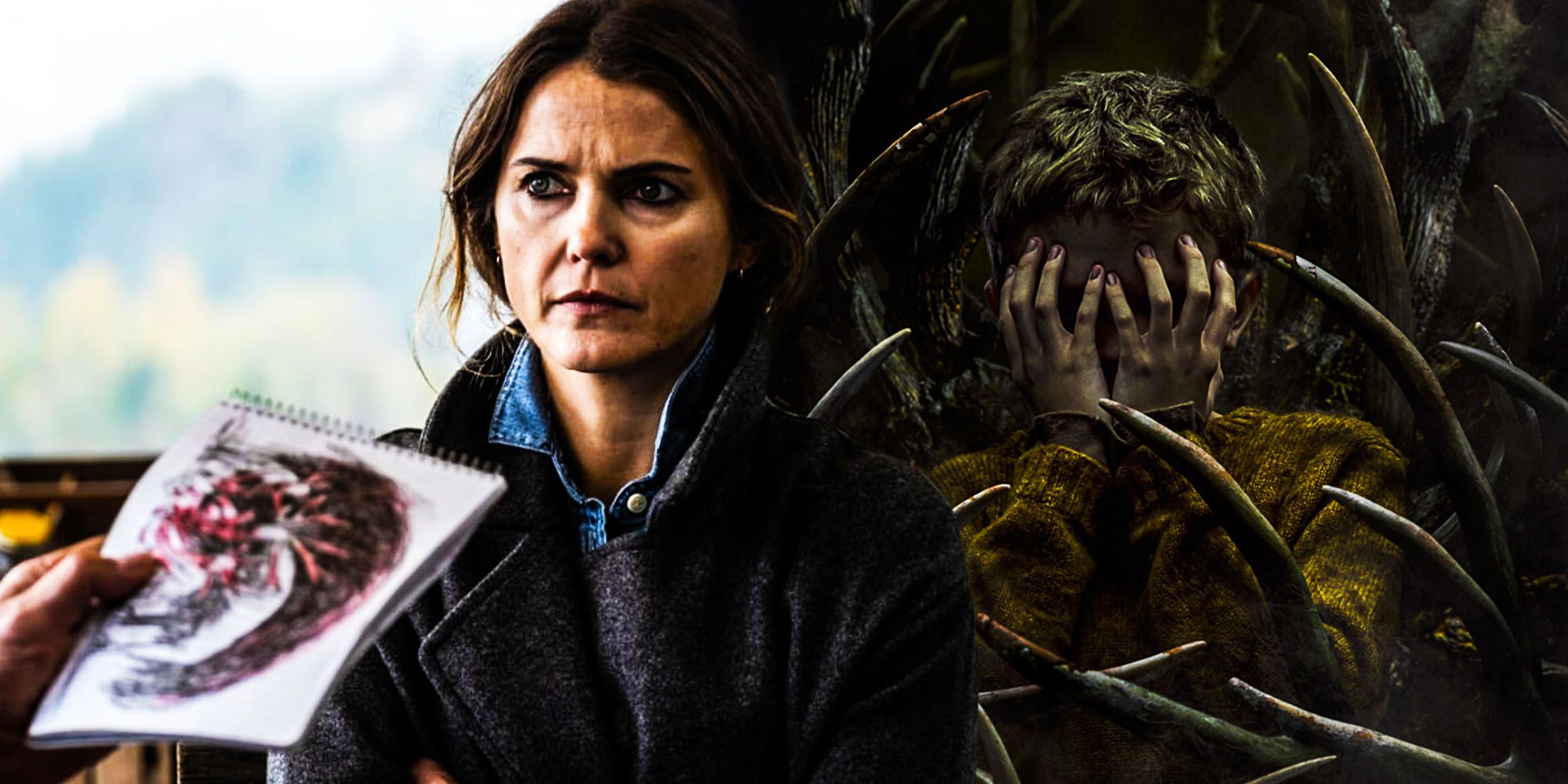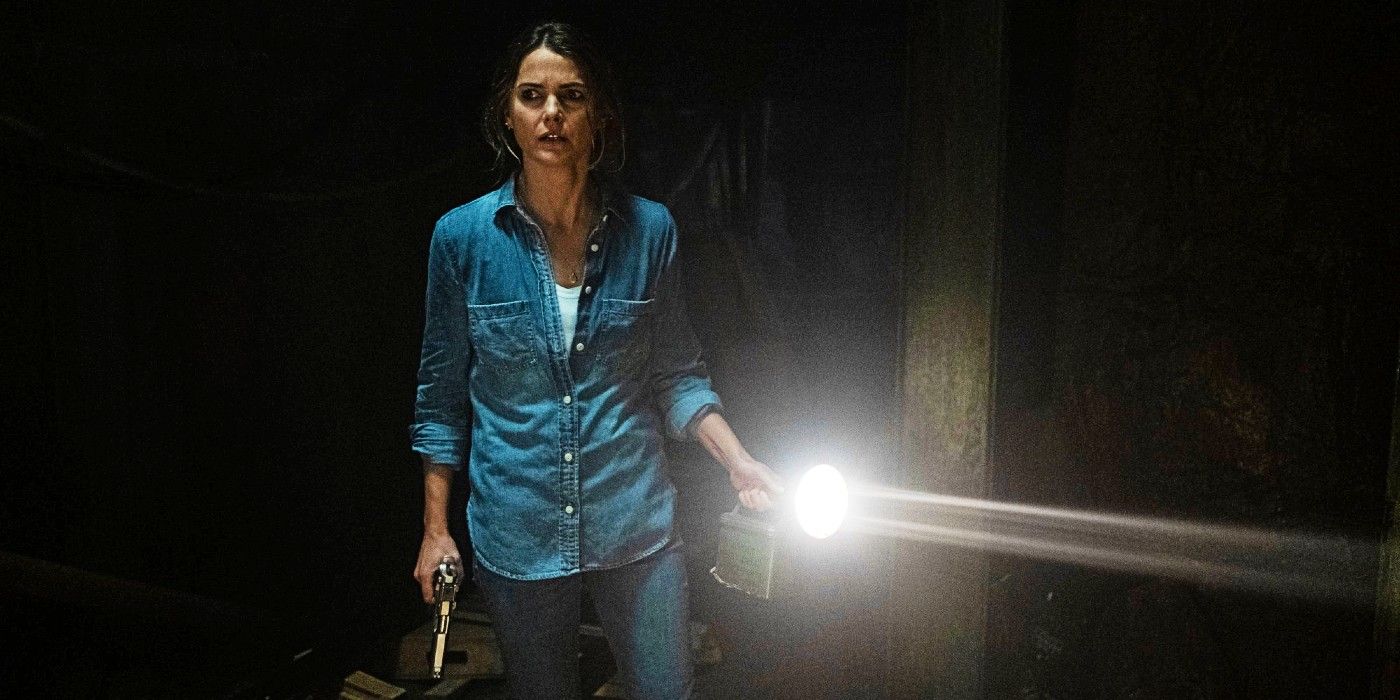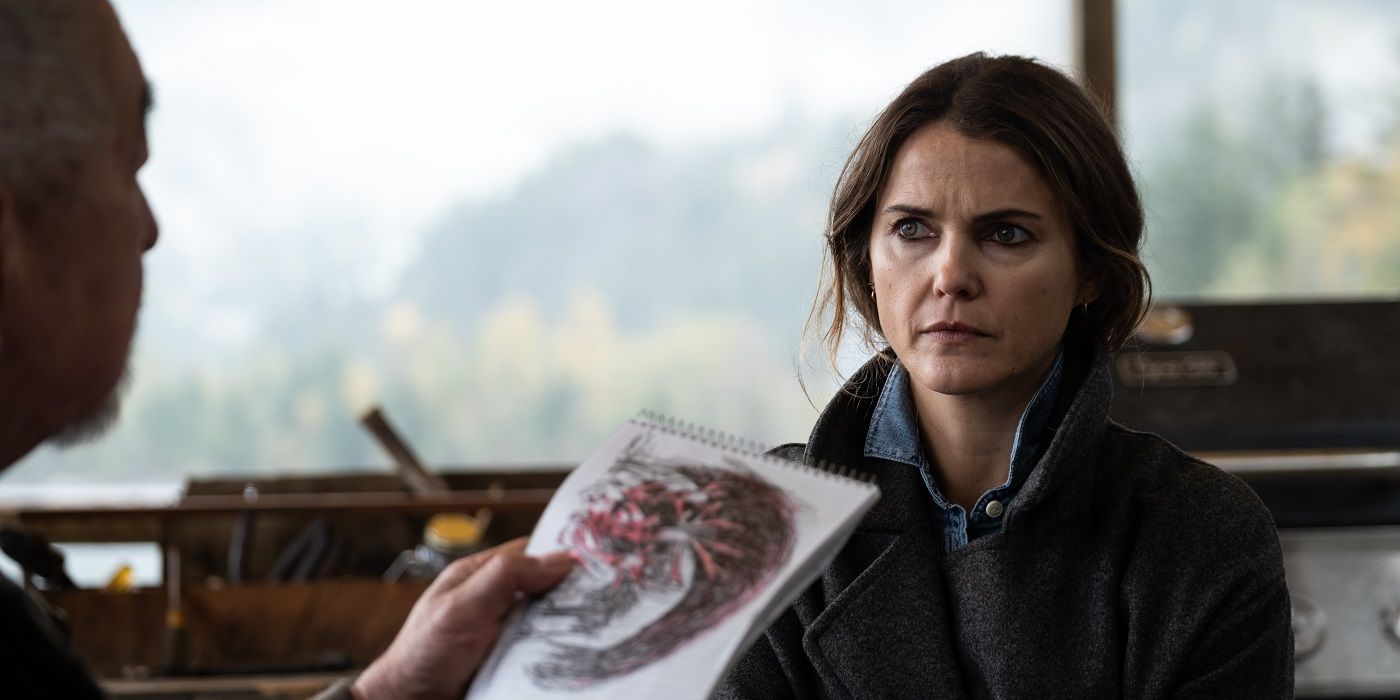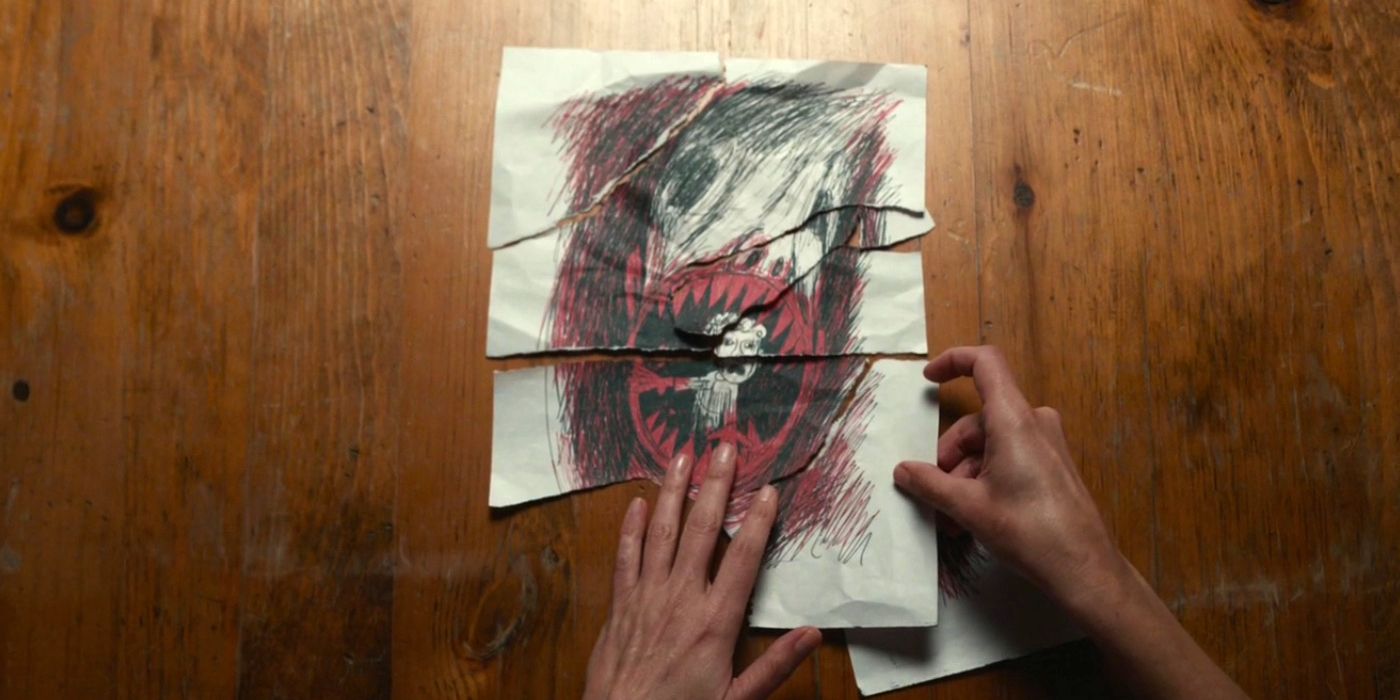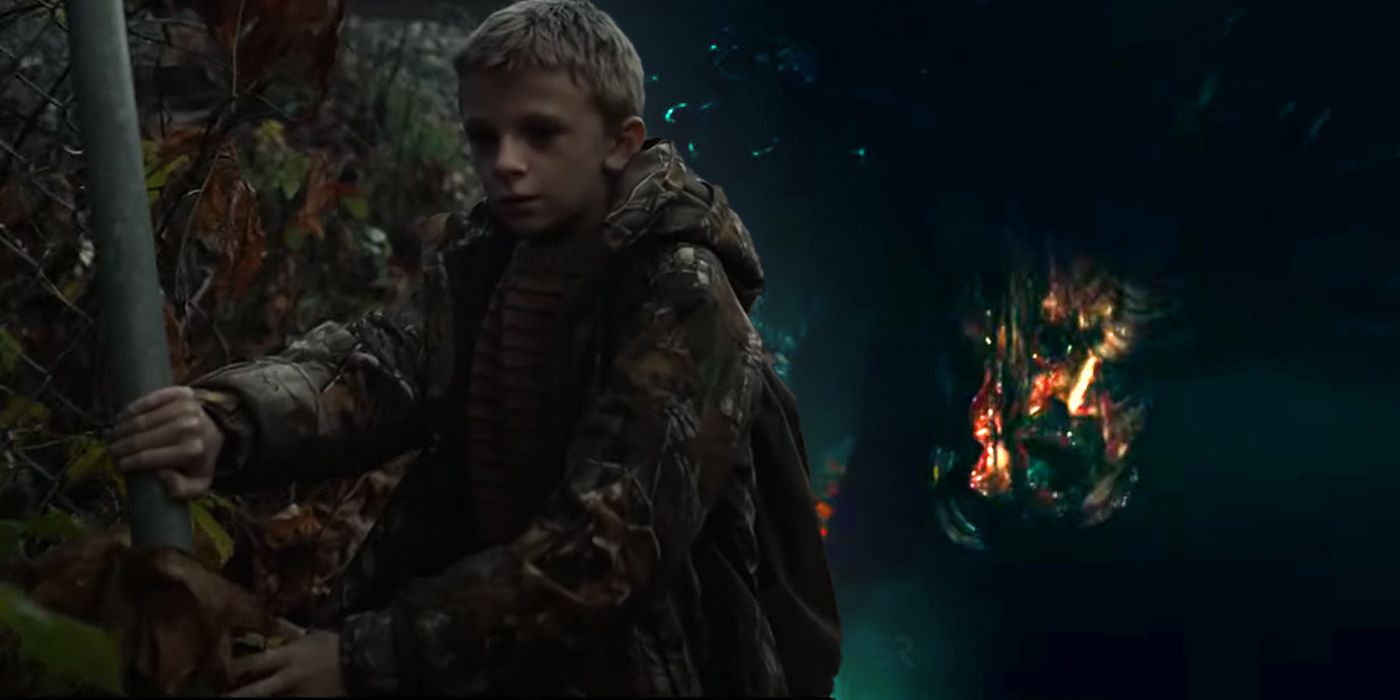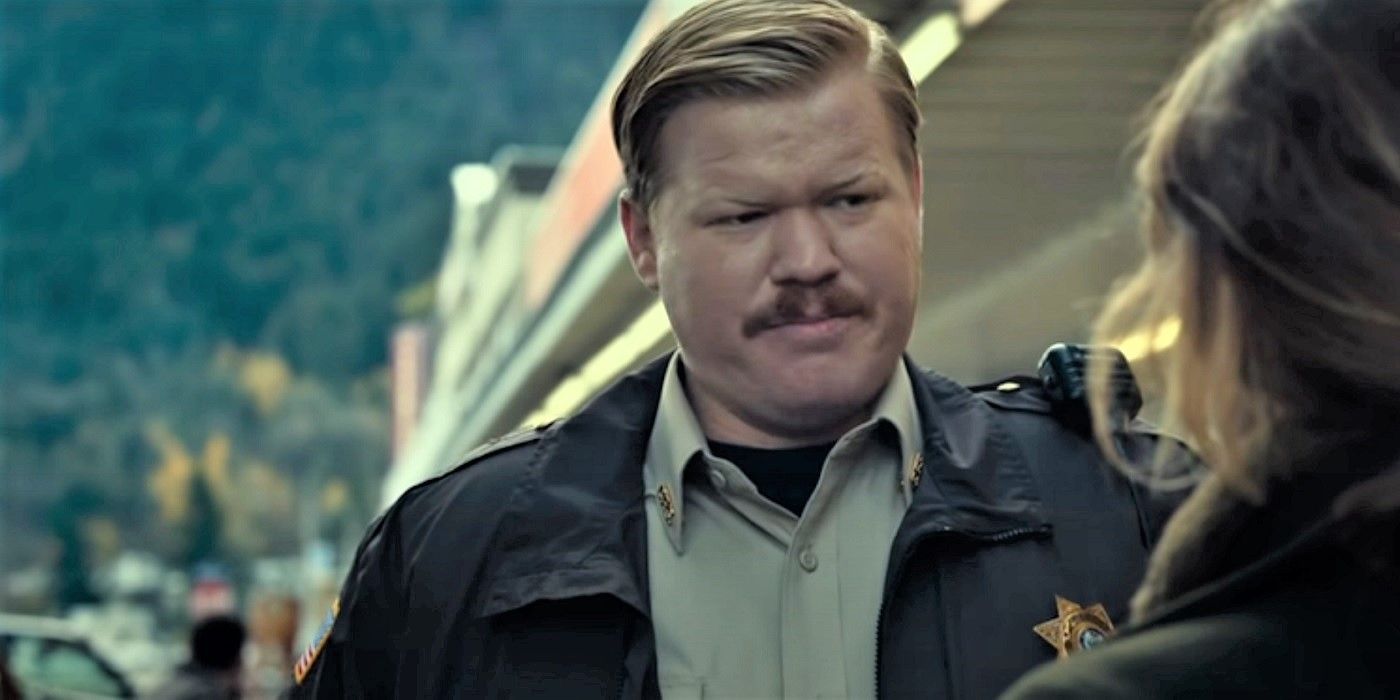Warning: This post contains spoilers for Antlers.
Antlers ending twist, mythology, and sequel setup explained. The horror film, directed by Scott Cooper, faced plenty of delays before finally releasing to theaters. Starring Keri Russell and Jesse Plemons, Antlers is a film that explores a creature from Indigenous lore, and the darkness lurking inside humanity as well.
Produced by Guillermo del Toro, Antlers follows Julia Meadows, a middle school teacher in Oregon who grows concerned about the wellbeing of Lucas, one of her students. Along with her brother Paul, the local sheriff, Julia attempts to figure out what’s really going on with Lucas, what happened to his father and brother, and exactly what supernatural creature is out for blood and wreaking havoc. The horror film is disquieting as it builds towards its finale, allowing for a couple of shocking and heartbreaking subplots that changes the direction of Antlers’ ending.
Antlers reveals the creature is a wendigo, an ancient being that emerges in particular situations that are set up in the film. With a tragic end and the introduction of a new plot direction, here is how Antlers’ ending sets up what might come next in the story, and the mythology surrounding the wendigo and where it comes from.
Antlers Ending Explained
Following Warren Stokes’ explanation of a wendigo, Julia and Paul find themselves embroiled with the creature, who followed them home in a bid to find Lucas. The middle schooler was convinced that if he kept feeding the wendigo, under the belief that it’s a new version of his dad, it would love him no matter what and he could keep it happy. Lucas is still afraid of the creature, but his response to it is born of trauma and abuse, with Antlers establishing that Lucas, like Julia and Paul, had an abusive father. It’s a coping mechanism for Lucas and a means to continue to receive affection by aiding someone under threat of harm.
Following the wendigo’s assault on Paul and Officer Dan, Lucas goes to the cave with the creature; Julia follows, knowing she has to stab the wendigo and rip out its heart to save Lucas and the rest of the town. Unfortunately, Aiden, Lucas’ younger brother, is a casualty of the wendigo’s first attack. Sensing he was about to transform fully and leave behind his human flesh like his father Frank, Julia also stabs Aiden before that can happen. With the reign of the wendigo seemingly over, Julia and Paul, now recovered from the creature’s attack, take Lucas in, three orphans caring for one another.
Why Julia Returned To Oregon After So Long
The abuse Julia faced at the hands of her father growing up is shown in flashbacks to her youth. However, Antlers keeps things vague, alluding to brutality and devastation without showing the grisly details. The reason she returned to Oregon after living in LA for so long was to be closer to her brother Paul, whom she left behind in a bid to get away from their father. While Julia could have come back years prior, she didn’t do so until after her dad died, likely because she couldn’t face returning to her childhood home if he was still around. Julia is very much working through the lingering trauma in Antlers, and it’s easy to see how her father’s mistreatment still affects her. Facing him would have been a raw emotional ordeal, and so Julia stayed away until it was safe to drop in on Paul and reestablish their relationship.
Antlers Mythology Explained & Why Wendigo Was Used
Antlers adapts the wendigo mythology, which originated with the First Nations Algonquian tribe. The creature is a part of the folklore of Algonquian-speaking peoples, passed down through the generations. In mythology, a wendigo is a supernatural creature that can possess humans and take on their form, becoming malevolent and cannibalistic. This cannibalism consumes it as the wendigo continuously feasts on human flesh without ever feeling satisfied. The use of the wendigo is purposeful when considering the setting and characters in Antlers. The wendigo is a representation of excessive consumption, which is why the cannibalistic traits appear, with the creature’s hunger never satiated. The wendigo’s appearance conveys imbalance in nature, greed, and destruction of land and the natural state of things.
In short, the creature is all-consuming, a striking reference to how colonization of Indigenous lands consumed and destroyed First Nation tribes, taking without giving back. The wendigo essentially consumed Frank because he trespassed and disrupted the mines, ignoring the sigils that were in place as a warning to anyone who entered; he was also a bad person. The supernatural creature is representative of the darkness that lurks within human beings, feeding off of their hatred, their negative energy, and the disregard they have for each other and the environment, among other things. The wendigo’s existence in lore is deeply tied to Indigenous struggles against colonial violence, greed, and starvation facing their communities. The wendigo is the personification of these things, with ties to restoring what was lost.
How The Wendigo Lore Is Different In Antlers
In Indigenous stories about the wendigo, the creature is humanoid and has a heart made of ice. Additionally, Native folklore suggests the surrounding environment turns cold whenever a wendigo is near, which is not dissimilar to a spirit entering a room in ghost stories. The coldness is specific to the creature’s lore, which is most closely associated with the winter months. In Antlers, the wendigo appears in what looks like late fall rather than in the dead of winter. The creature in the film sheds its human skin when it’s fully ready to take over rather than being a humanoid giant with pulled flesh and its bones jutting out.
What’s more, the wendigo has literal antlers coming out of its head in the film. This aesthetic trait is not prevalent in Indigenous stories of the wendigo; the antlers — or horns, as is sometimes depicted — are more aligned with Hollywood’s view of the creatures rather. What Antlers also keeps out of is the wendigo’s agility, its mimicry of voices, which is done to lure people to it, and the infiltration of not just the flesh, but of people’s minds as well.
How Antlers’ Twist Ending Sets Up A Sequel
Antlers ends in a fairly ominous way. Sure, all the loose ends have been seemingly tied up, with Julia and Paul taking Lucas in to care for him (at least for a while). What is unexpected is seeing Paul start bleeding from his eye as Julia and Lucas walk away. There is a close-up on the black, soil-like substance staining Paul’s hands and it’s clearly foreshadowing his turn as the wendigo. Antlers’ twist could set up a sequel that will see Julia having to face down her brother. It would be emotionally resonant because she and Paul have been through a lot together in their childhoods and are still close. Antlers saw Julia remorsefully kill Aiden because she knew he was too far gone to be saved.
Considering her close relationship with Paul and how they finally seem to be on the mend after their father’s passing, an Antlers sequel could create some tension between them, forcing Julia to fight for her brother or kill him like she did Frank and Aiden. What ultimately stands out, however, is that despite killing the wendigo haunting the town, it continues to infect others, passing down its traits from one person to the next while devouring more flesh, always hungry and never gratified. Whether there will actually be a horror sequel to Antlers remains to be seen, but the twist with Paul having been infected surely leaves the door open for more of his and Julia's story to tell.

